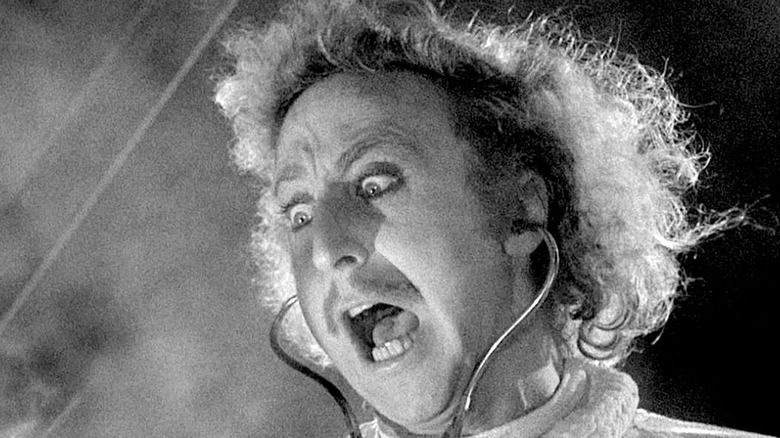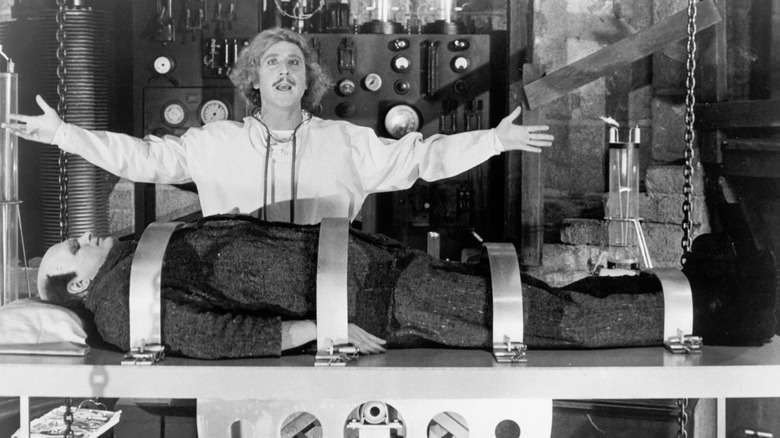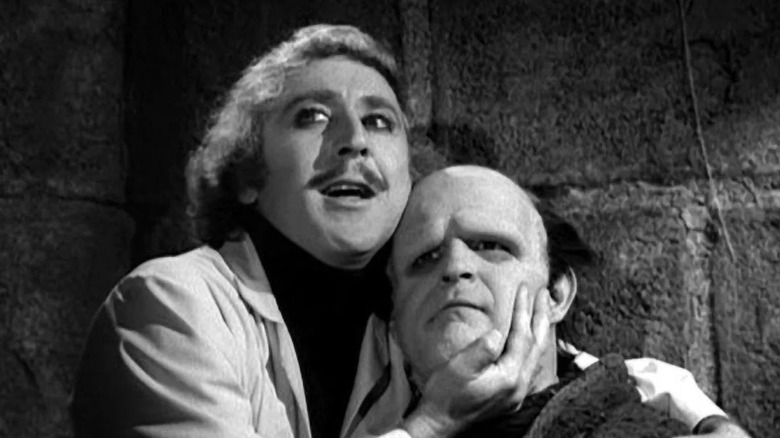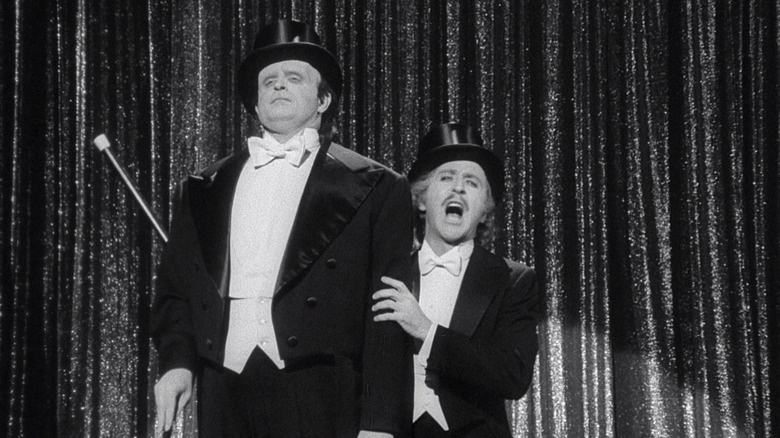How Columbia's Stubbornness Cost The Studio Mel Brooks' Young Frankenstein
As most people with a working knowledge of cinema history know, movies used to be predominantly in black & white — glorious black and white, if you will! That qualifier is not at all facetious, by the way, given how the cinematographers during the studio system did a regularly fabulous job of lighting actors and sets in moody, lush, expressionist ways without ever having the benefit of color.
Yet when films made the transition to being shot predominately in color, black and white suddenly became a dirty word to the movie studios, believing that audiences would reject a black and white film as being old-fashioned or worse. Unfortunately, their assumption became a sort of self-fulfilling prophecy, as many less cultured audience members still view black and white movies as being somehow old and boring, causing lists like these to be written up by critics and historians.
Despite becoming famous for pushing the envelope of good taste (whether through a story about rotten producers making a musical about Hitler or racist cowboys breaking wind around a campfire), filmmaker Mel Brooks was a man far from uncultured. Amongst the proof of that statement is the fact that, when getting his follow-up to "Blazing Saddles," "Young Frankenstein," nearly greenlit by Columbia Pictures, Brooks balked at the studio's insistence that he not film it in black and white. Given that the movie pays tribute to the classic Universal "Frankenstein" films of the '30s and '40s, black and white was the way "Young Frankenstein" ought to have been made — and eventually was, though not at Columbia.
Brooks insists on making a Frankenstein film and not a Faux-kenstein
While Brooks' debut film "The Producers" garnered great reviews and his second feature, "The Twelve Chairs," eventually found its audience, the director didn't become bankable until his third film, the mega-hit "Blazing Saddles." However, when Brooks and co-writer/star Gene Wilder were attempting to get "Young Frankenstein" off the ground, "Blazing Saddles" hadn't yet been released to huge box office and wide acclaim. Both movies were released in 1974; "Young Frankenstein" in December, "Blazing Saddles" in February, mere days before "Young Frankenstein" began principal photography.
As such, when Brooks was attempting to work out a deal to make "Young Frankenstein" at Columbia, the studio was wary of the director's proposed budget of at least $2 million, as Brooks recalled on the film's DVD commentary. When Columbia countered with a budget of $1.75 million, Brooks was reluctant but willing to settle, provided he be able to make the film with creative control. As Brooks recalled in an interview from 2012:
"And on the way out of a meeting, I said, 'I'm going to do this in black and white.' Wow. Everything came to a halt. I said, 'The comedy won't work if it's in color. It'll be silly.' And they said, 'Peru just got color.' I'll never forget that. Laddie [Alan Ladd Jr.] had just taken over Fox a week before, so we got [the script] to him. Next day we were a Fox picture."
With that, the idea of Columbia making "Young Frankenstein" was as Abby Normal as the creature's brain. "I said then the deal is broken," Brooks recalled in 2014.
Brooks had to convince the cinematographer
Now fully greenlit at 20th Century Fox, Brooks found himself needing to clear another hurdle before shooting "Young Frankenstein" in black and white: his cinematographer, Gerald Hirschfeld. Writing about making the film for American Cinematographer before its release, Hirschfeld recalled trying to persuade Brooks to change his mind:
"At first, I balked at the decision to do the film in black-and-white; suggesting that perhaps we start in black-and-white, as the film opens in old-time Transylvania, and then segue into color as we go to modern-day Baltimore to meet young Dr. Frankenstein. But the director was firm and I soon realized, as I progressed more into the feeling of the film, that he was 100% correct."
Now on board, Hirschfeld assisted in capturing the perfect black and white look for "Young Frankenstein," from working with makeup designer William Tuttle on giving the monster (Peter Boyle) green make-up so it would photograph pale white in B&W and making sure production designer Dale Hennesy's 35'-high sets looked as grand and moody on screen as they apparently did in person.
'Young Frankenstein' reaches comedic heights through playing it straight
Brooks isn't just a great director, he's a consummate comedian, and like any good comedian, he knew that for comedy to work best, it needs to be played straight. In other words, while much of the cast of "Young Frankenstein" are frequently acting funny in the film, the movie itself doesn't look funny, thereby providing the contrast of tone that comedy thrives upon.
To use another phrase popular amongst comedians, Brooks was committing to the bit, making "Young Frankenstein" look and feel as detailed and lush as Universal's classic "Frankenstein" films did, especially 1931's "Frankenstein" and 1935's "Bride of Frankenstein" (boundary pushing in their own way!), both directed by James Whale. Brooks even hired Kenneth Strickfaden, who was responsible for creating the bizarre scientific instruments used in the Whale pictures, to bring that equipment to the "Young Frankenstein" set.
Thanks to Brooks' efforts, "Young Frankenstein" remains an enduring comedy classic, a movie that can be enjoyed by all ages without trashing or talking down to its cinematic inspiration. The type of film Columbia Pictures was likely envisioning would've been garish, uninteresting, and ephemeral; Brooks, possessing confidence, not unlike that of a mad scientist, knew from the start that "Young Frankenstein" could be something special.



